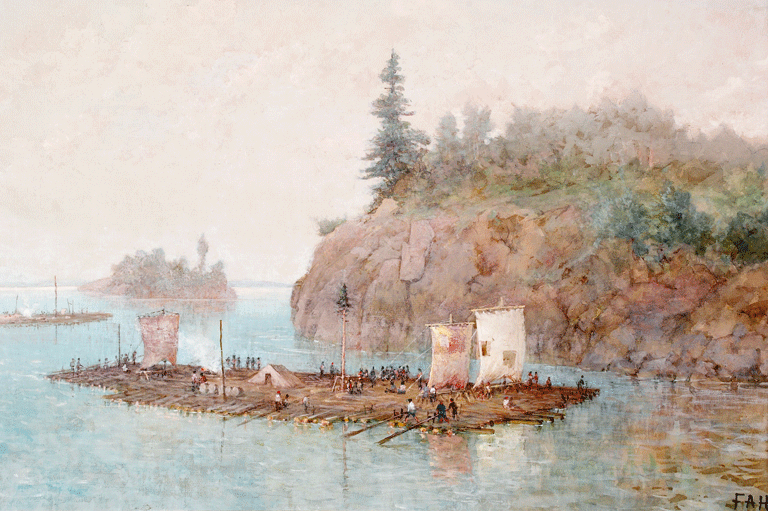Relevance of Treaties Today
Grade Levels: 7/8, 9/10, 11/12
Subject Area: Social Studies, History, Geography
This lesson is based on the Treaties and the Treaty Relationship issue of Canada’s History magazine.
Lesson Overview
In this lesson students explore the enduring relevance and continued significance of the Treaty relationship in Canada and consider the Treaty relationship as a path toward reconciliation.
Time Required
One to two class periods
Historical Thinking Concept(s)
- Establish historical significance
- Use primary source evidence
- Identify continuity and change
- Analyze cause and consequence
- Take historical perspectives
- Understand the ethical dimension of historical interpretations.
Learning Outcomes
Students will:
- Appreciate and value traditional First Nation territory.
- Explore the historical and contemporary relevance of Treaties.
- Recognize the Treaty relationship as a national experience.
- Examine the Treaty relationship as part of the process of national reconciliation.
The Lesson Activity
Activating: How will students be prepared for learning?
- Read the following excerpt from an October 2016 CBC article:
As Winnipeg Jets fans make their way to their seats and players prepare to stand on home ice for the national anthem, an announcement fills the downtown arena. The message — believed to be a first for an NHL team — says the Jets play on Treaty 1 land which consists of "original territories of Anishinaabe, Cree, Oji-Cree, Dakota, and Dene peoples, and the homeland of the Métis Nation."
- Ask: What is this type of public statement called? [Traditional/Territorial Acknowledgement statement, etc.]
- Probe: Have you heard a statement like this before? Does our school have one? [If so, read it]. Is the word “Treaty” in our school’s traditional territory acknowledgement statement? Why or why not?
- Encourage and lead an all-class discussion.
Acquiring: What strategies facilitate learning for groups and individuals?
- Divide the class into 8 groups.
- Hand each group the title of an article from Treaties and the Treaty Relationship written on a small piece of paper [explain that they are the titles of articles of the special issue]:
- We Are All Treaty People
- Interpreting the Treaties
- Ties of Kinship
- The Numbered Treaties
- Living Well Together
- Algonquin Territory
- Nations in Waiting
- Finding Forgiveness, Building Trust
- Instruct a student from each group to read aloud the title.
- Lead an all-class discussion: What themes do you see? What commonalties are there? Focus on particular word/s: kinship; living well; nations in waiting; forgiveness; trust; “We Are All Treaty People.”
- Ask: How are Treaties relevant today?
- Ask: How are Treaties and reconciliation connected?
- Encourage questions and discussion.
Applying: How will students demonstrate their understanding?
- Pass out copies of the magazine to each group. Instruct them to read their assigned article and write a 50 – 75-word overview.
- Complete BLM #9.1: We are All Treaty People.
- Instruct a student from each group to read their group’s summary to the class.
- Cut the summary box and tape/affix the article to the appropriate area on the map of Canada.
Materials/Resources
- Copy/copies of the Treaties and the Treaty Relationship issue of Canada’s History magazine.
- Article titles from Treaties and the Treaty Relationship written on slips of paper [8 titles]
- Large wall map of Canada that students can tape/draw on (consider making a bulletin board display)
- Printed copies of BLM# 9.1 – 8 or more for rough copies
- Scissors, tape
Extension Activity
Assign students a Canadian town/city and have them prepare a traditional territory acknowledgment statement based on research of that area’s history between First Nation peoples and newcomers. Include Treaty acknowledgement (if pertinent) and specific First Nation cultures.
Lesson Plans
Themes associated with this article
Advertisement
Adaptations for grades 3-6

Encouraging a deeper knowledge of history and Indigenous Peoples in Canada.
The Government of Canada creates opportunities to explore and share Canadian history.

The Winnipeg Foundation — supporting our shared truth and reconciliation journey.

We contribute to the well-being of the communities we serve through grants, scholarships, sponsorships, fundraising, volunteering and collaborative relationships with community partners.














